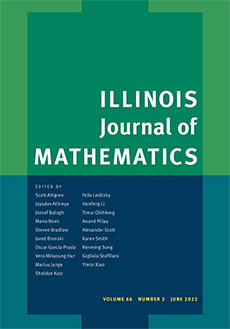Abstract
In a paper that appeared in 2010, C. Tone proved a multivariate central limit theorem for some strictly stationary random fields of random vectors satisfying certain mixing conditions. The “normalization” of a given “partial sum” (or “block sum”) involved matrix multiplication by a “standard $-1/2$ power” of its covariance matrix (a symmetric, positive definite matrix), and the limiting multivariate normal distribution had the identity matrix as its covariance matrix. The mixing assumptions in Tone’s result implicitly imposed an upper bound on the ratios of the largest to the smallest eigenvalues in the covariance matrices of the partial sums. The purpose of this note is to show that in Tone’s result, for the entire collection of the covariance matrices of the partial sums, there is essentially no other restriction on the relative magnitudes of the eigenvalues or on the (orthogonal) directions of the corresponding eigenvectors. For simplicity, the example given in this note will involve just random sequences, not the broader context of random fields.
Citation
Richard C. Bradley. "On the behavior of the covariance matrices in a multivariate central limit theorem under some mixing conditions." Illinois J. Math. 56 (3) 677 - 704, Fall 2012. https://doi.org/10.1215/ijm/1391178544
Information





